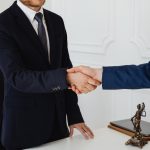Maggie Ramage’s role in the IP team at Edwin Coe is to support and work in the trade mark registration practice.
“On a daily basis I deal with trade mark clearance, protection, defence, litigation, renewals and any area relating to trade mark protection worldwide.
“I work closely with WIPO, the EUIPO and the UK IPO, and I also handle design protection.”
The world of trademarks varies from day to day: “It is always interesting (and fun) to see what new issues arise each day. I never know what will come up, or from what country”, explains Maggie.
She discusses how the US and UK differ in relation to trademarking, and how the industry has changed over the years.
How would you describe the EU’s progress in Trademark and IP law over the past decade? What was the biggest turning point?
There have been some big changes in trade mark practice over the years, most of which have happened over the last 10 years. There have been improvements in dealing with customs issues and more recently attention has been turned to the cost of protection, which means that it is more cost effective to file in the areas of interest in the EU, not just adding trade mark classes (as used to be the case); previously it was possible to protect three classes for the price of one, which I think most trade mark applicants tended to do whether they had interest in the extra classes or not. This led to clutter on the register, and more uncertainty and cost for trade mark owners, who would have difficulty in clearing marks for use and registration in 28 states, only to have to face expensive litigation against prior marks, where use of those marks in the relevant fields was questionable.
What is next on the agenda for European trademark law and the development of protection for beauty care specialists, financial institutes and mobile telecom providers?
There are some big changes in procedure just introduced in the EU, starting from 1 October 2017. For example, there is abolition of the graphic representation for a mark. This has now been replaced by a requirement for “clarify and precision” as to what is protected. This should help in protection of more non-traditional marks, such as sounds or smells, many of which have failed previously as it was not easy to define the mark being applied for graphically, so it could be easily understood or easily searched. The types of marks now agreed could include not only the word or logo or shape of a mark but also the position of a mark, the pattern, colour, sound, motion, multi-media or holograms. This reflects multi-media ways of disseminating information and brings the system into the 21st century.
Certification marks are now allowable – these indicate that goods and services possess certain characteristics, rather than their trade mark origin (which is the normal basis of trade mark protection, i.e. being a sign of origin of a particular product or service from a particular source). An example of this in the UK is the certification mark for Harris Tweed. It will be interesting to see the take-up of this in the EU. The UK has used this method of protection for years, but some EU member states are not familiar with the concept of certification marks. Regulations will need to be produced governing use of the particular mark.
There are also a large number of procedural changes just commenced, such as the method of corresponding with the EU – there is more on-line correspondence, e-filing of cancellation or invalidity proceedings.
The biggest thing on the horizon in Europe will of course be Brexit. We believe that existing EU protection of marks at the EUIPO will be extended to the UK, but the question is how this is done. Automatic extension of rights is favoured., however also under discussion has been opting in to UK protection by filling in a form or paying a fee so that an existing EU right can be extended to the UK. If there was extra administration, such as form filling or fee paying, it could lead to a huge work load for not only practitioners but also the trade mark owners themselves, and of course the UKIPO.
The other element of Brexit most pertinent to trade mark practitioners is rights of audience before the EUIPO. This is probably the biggest concern right now. We do not yet know when the rights will change, and a number of UK practitioners are looking to link up with EU practitioners for future EU work, or looking to open offshoot premises (which must be real and effective offices, and not just a “brass plaque” address) for example in Dublin. It remains to be seen how this will affect my existing clients and my own practice. Financial institutions in the UK are already looking to relocate staff to premises to the EU to continue their current business. Should we all as UK trade mark practitioners consider doing the same?
You previously worked in the ‘tech capital’ San Francisco taking care of world-wide trade mark affairs; what do you think the UK could adopt in order to better the IP industry for your clients?
When I was seconded to San Francisco to work as a trade mark attorney in the USA, I saw a very different world. The experience was great, but scary at times. It was hard to get to grips with a complex practice that was very different to that operating in the UK. One of the hardest things was working through the Trade Mark Manual of Examining Procedure, to understand how to successfully work with the USPTO. However, it was good to get a broad perspective on, for example, trade mark use. I was lucky to have the assistance of a New York trade mark attorney who was available to help me when I was unsure, as I was the only person handling trade marks for the whole corporation at the time.
It is pointless to have a trade mark on file in the US with no use, and this is also relevant in the UK. This can leave the trade mark owner vulnerable to a challenge by a third party to their mark on the basis of non-use and they could actually lose their rights. It is not possible to stockpile registrations for possible future use – this is a dangerous thing to do. One thing the US does concentrate on is having a pure trade mark register, without the clutter sometimes seen in the EU or UK. Upon registration, a trade mark proprietor must show use of their mark to maintain that registration, and that use must be demonstrated upon renewal – I do not see a problem with this. It serves to clear out trade mark specifications for trade mark registrations, so that the register is easily understood – what remains is what is in use. This helps in trade mark clearance for availability and is a much more certain way of operating a public record register. I think it would be useful to adopt this practice in the UK.
As a thought leader, how are you increasingly raising the benchmark of standards when it comes to Trademark law, especially for your clients?
When dealing with my own clients I am constantly trying to be proactive. It was very useful to have practiced in-house in three different companies. This leaves a feeling that you know the internal problems a trade mark owner faces, such as budget restraints, constant audits, advising on filing and defence strategy, gap filling as new markets become of interest, or brand extension when new product ranges or services are introduced under an existing mark, and prioritising work in general.
It constantly amazes me that updates in trade mark protection are often overlooked in-house, particularly in large corporate companies where there is no in-house IP department to advise. I see it as my role to ask questions and to fill those gaps. I like to visit my clients for those reasons, to get a good grasp of their business and interests and what needs to be done to protect those, together with any future plans they may have.
Generally, I love the variety faced in trade mark protection and defence. I can move from cosmetics to drinks to business services, to clothing, to garden sheds within a matter of minutes. One of the best things about the job is getting to know the clients, their businesses and plans. In addition, I have made a large number of friends and acquaintances around the world over the years, which is so useful in this international world. I try to update both clients and overseas associates with updates in law and procedures in the UK and the EU, plus anything new coming out from the UKIPO or the EU or even Brexit, so we can plan ahead for what is about to hit us.
Maggie Ramage
Partner
+44 (0)20 7691 4031
www.edwincoe.com
Maggie.ramage@edwincoe.com
Maggie is a Chartered Trade Mark Attorney on the UK Register of Trade Mark Attorneys, and a European Trade Mark Attorney practising before the European Trade Mark Office (EUIPO) based in Alicante, Spain. She is a Fellow of The Chartered Institute of Trade Mark Attorneys, and is a past President of that body. Maggie studied trade mark law while working in patent administration, and in 1982 became head of European Trade Marks for the Californian-based Raychem Corporation.
Maggie became a partner in Alexander Ramage Associates LLP in 1991, and in April 2015 joined Edwin Coe LLP as a Partner.
Her clients include start-up firms and multinationals, and range from medical practitioners to financial institutions, bath and beauty care specialists, hair care manufacturers, mobile telecom providers and food and drink providers.
Edwin Coe is a medium sized law firm, established in Lincoln’s Inn, offering many disciplines such as private client, litigation, tax, property, immigration, employment law, among others.








